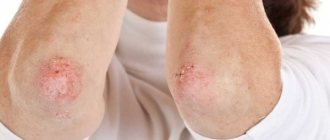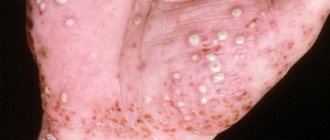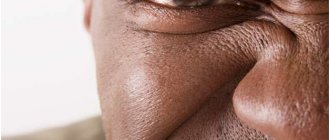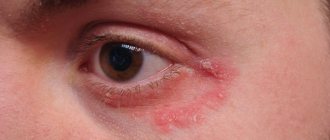Skin diseases in children
Pediatric dermatology is inseparably linked with pediatrics and deals with the treatment of skin diseases in children, from the neonatal period, adolescents to 17 years of age. A child cannot be viewed simplistically as a small adult. The child is not just small, he is characterized by anatomical, physiological, immunological and many other age-related characteristics of childhood. These age-related features are also present in the skin, so a pediatric dermatologist must be a qualified pediatrician.
Our dispensary has a separate children's department. Children, while waiting to be received, can watch cartoons on the TV installed in the lobby; there are toys.
Many skin diseases are severe, with a chronically relapsing course and leading to serious deterioration in health, a reduction in life expectancy and a decrease in quality of life. Some of them cannot be cured forever. But this should not depress you. We will do everything to ensure that you do not suffer from the very fact of having the disease. We understand well that today there is not a single chronic disease that medicine could completely eliminate. But in your case, we undertake to significantly relieve you from debilitating symptoms, exacerbations and all the inconveniences caused by the disease.
Skin diseases such as allergic dermatoses (atopic dermatitis, eczema); psoriasis that has a chronic, relapsing course leads to a significant decrease in the quality of life and often worsens adaptation in the social environment. As experience shows: treatment of such children by our specialist pediatric dermatologists gives excellent results, expressed in a significant reduction in the time of exacerbation, an increase in the period of remission (absence of manifestations of the disease).
We provide qualified diagnostic and treatment assistance to children suffering from various dermatoses. We provide treatment for: allergic dermatoses (atopic dermatitis, childhood eczema, neurodermatitis, infant pruritus, urticaria), psoriasis, acne (juvenile acne), scleroderma, pyoderma, viral skin diseases (molluscum contagiosum, warts), scabies, etc. We use modern examination methods and treatment.
A number of diseases are infectious in nature (microsporia, pyoderma, scabies, viral dermatitis). Therefore, if any rash occurs on the skin, you should consult a dermatologist as soon as possible. This will significantly reduce treatment time and reduce the likelihood of infecting others.
Our specialists have achieved significant success in the treatment of acne.
Systematic treatment of chronic skin diseases can provide you with complete, long-term control over your skin condition. We will help you solve many problems of chronic skin diseases that are dealt with by dermatology. Your treatment is selected only for you and in accordance with the actual state of your health.
When making an initial visit to a dermatologist for the most accurate and timely diagnosis of a dermatological disease, if possible, do not wash and stop using medicinal ointments and creams 2-3 days before visiting the doctor, and also take with you all available medical documents and the results of the latest laboratory tests (tests). blood, urine, feces, biochemical blood tests, etc.).
Our concept of medical care in pediatric dermatology:
- We will tell you everything about your disease, without hiding anything.
- You will learn everything about him as modern science knows.
Strelkova O.V., Buzyreva L.V.
Children's diseases with rash. Vaccinations and immunity assessment
Most childhood infections are accompanied by various rashes. A rash is a general reaction of the body to the toxic effects of a pathogen and its waste products, and the child has an accelerated metabolism, wide blood vessels and good blood circulation.
Children's diseases are best dealt with in childhood. Firstly, this is how the child’s immunity is formed and protection against infections in the future. Secondly, in adulthood, childhood diseases are much more severe, and many of them are especially dangerous during pregnancy.
All infections are highly contagious, progress with fever and have symptoms of a cold. Often, characteristic signs of the rash allow them to be distinguished from each other. Let's look at the main childhood diseases and their distinctive features:
Measles
Recently it was believed that measles had been defeated, but recently outbreaks have been occurring more and more often. This is due to the refusal of mandatory preventive vaccinations. In fact, measles is a serious disease, especially in adolescence and adulthood. It occurs with complications: pneumonia, otitis, and frequent damage to the kidneys, liver and brain. May lead to deafness and blindness. The measles rash is maculopapular (papules - small elevations on the skin), appears on the 3rd day of illness, begins behind the ears and on the face and appears in stages from top to bottom, can have different sizes (polymorphic). Before the appearance of the rash, you can notice white dots on the mucous membrane of the oropharynx, reminiscent of semolina, with a red rim; they are called Filatov-Koplik spots.
Chicken pox
Caused by herpes virus type III. Most children become ill between the ages of 2 and 7 years; at older ages it is more severe. Everyone knows that the rash with chickenpox is in the form of blisters (vesicular). It starts from the scalp, spreading throughout the body. First, spots appear, which successively turn into papules and itchy blisters with transparent contents, leaving behind crusts. All these elements can be simultaneously observed on the child’s body. In adults, the infection can occur as shingles.
Rubella
It is highly contagious, often mild in both children and adults, and therefore may go undetected. It is particularly dangerous during pregnancy, as it can lead to the formation of fetal developmental abnormalities for up to 12 weeks. Typical manifestations: enlargement of the occipital and posterior cervical lymph nodes, a small spotted rash, without pain or itching.
Scarlet fever
Caused by group A beta-hemolytic streptococcus. It manifests itself as a sore throat and a typical pinpoint rash against the background of severe redness of the skin. Most of the rash elements are in the area of the flexor surfaces and they tend to merge. The nasolabial triangle always remains free of rash. Another sign is a bright red tongue.
Erythema infectiosum
Caused by parvovirus B19. In children, it is widespread, mild, with signs of a cold, and possible headache. The hallmark is bright redness of the cheeks, which is why parvovirus infection is better known as “slapped cheek disease.” Dangerous in the first trimester of pregnancy.
Roseola
Caused by herpes virus type VI. Mostly children under 5 years of age are affected. The disease is rarely recognized because in the first 3 days the temperature rises sharply to 39-40 degrees, on the 4th day it drops to normal numbers without signs of a cold, and a rash resembling rubella appears. Few people realize that these are manifestations of the same disease. In adults it causes chronic fatigue syndrome.
We have looked at the typical manifestations of the rash. But recently, the classic course of the disease has rarely occurred. In addition, rashes can occur with other infections: caused by the Epstein-Barr virus, cytomegalovirus, yersiniosis, viral hepatitis, and so on. The most correct position of a parent in the event of a rash in a child is to call a doctor at home or an ambulance to rule out severe, life-threatening infections, for example, meningococcal.
Why are vaccinations needed?
Vaccination against measles is mandatory and is included in the National Vaccination Calendar. There are vaccines against chickenpox and rubella; the latter is being discussed as mandatory for girls.
How do you know if you have immunity to childhood infections?
For this purpose, antibodies are determined - immunoglobulins class G (IgG). These are proteins of the immune system that appear in the body when a pathogen enters the body and persist for a very long time or for life. Their identification indicates good immunity and protection from re-infection.
But it should be remembered that IgG can be determined during the current disease. If there is a clinic, then IgM and IgA are simultaneously determined, as well as the identification of the pathogen by PCR.
The KDL laboratory offers to determine immunity to the following infections:
- Antibodies to measles virus, IgG
- Antibodies to the Varicella-Zoster virus, IgG – determination of immunity to chickenpox
- Antibodies to rubella virus, IgG
- Antibodies to parvovirus B19, IgG
- Antibodies to the herpes virus type VI (Human Herpes virus VI), IgG – to the causative agent of roseola
Who is indicated for determining immunity to childhood infections in the first place?
- Against measles - for everyone. If IgG is not detected, therefore, there is no protection and revaccination is recommended in order to avoid infection.
- When planning pregnancy - if there is no immunity, vaccination is indicated to provide protection against infections that can cause intrauterine damage to the fetus (rubella, parvovirus B19)
- Early in pregnancy (first 12 weeks). Infection during this period is most dangerous, since all the organs and tissues of the baby are formed). If IgG is detected, there is no risk of infection.
Get examined by the KDL laboratory in a timely manner and be healthy!
Eight dangerous skin infections in kindergarten. How to prevent them
Journal of "Medical care and nutrition for preschool children", No. 1 January 2022.
Eight dangerous skin infections.
Irina Rapoport, professor, head of the laboratory of the Research Institute of Hygiene and Health Protection of Children and Adolescents, Federal State Budgetary Institution "SCCH" of the Ministry of Health of Russia, Doctor of Medical Sciences.
If rashes, spots, or dandruff appear on your child's skin and hair, do not panic. In this article you will learn about common skin diseases in children, their symptoms, causes and how to protect preschoolers from them. To protect preschoolers from skin diseases, monitor their personal hygiene and teach them to follow basic hygiene rules. We have collected information on eight major skin diseases in children. Find out what the symptoms and causes are and how to prevent seborrheic dermatitis, trichomycosis, ringworm, lice, scabies, impetigo, herpes, molluscum contagiosum.
How are skin infections transmitted?
Attention: The skin participates in heat exchange, is responsible for removing water and harmful waste products, and performs a protective function, protecting the human body from bacteria, viruses, parasites, mechanical, chemical and thermal damage. Most skin infections are transmitted through direct contact from a sick person to a healthy person, through household items and toys, if children, parents and kindergarten workers do not comply with the rules of personal hygiene and the sanitary requirements of educational organizations. Decreased immunity, poor nutrition, and stressful situations provoke the appearance or exacerbation of infectious skin diseases in children. Skin diseases can be caused by hypo- and avitaminosis, hypothermia, and colds. If a child’s skin areas have changed, a rash or itching has appeared, this may be a sign of both a skin disease and problems with the functioning of internal organs. Therefore, do not delay diagnosis and treatment, but consult a doctor immediately. Local and general medications can be used only after the doctor has examined the child and prescribed treatment. There are many skin diseases in children. They are: fungal (seborrheic dermatitis, trichomycosis, ringworm); parasitic (pediculosis, scabies); bacterial (impetigo); viral (herpes, molluscum contagiosum).
Seborrheic dermatitis
Dictionary: Alopecia is a pathological hair loss that leads to its partial or complete disappearance. The causes of seborrheic dermatitis are not fully understood. But scientists have found that in most cases it is caused by a microscopic fungus.
Symptoms : Red spots appear on the scalp, sometimes on the cheeks and upper chest of the child. The hallmark of seborrheic dermatitis is dandruff. It occurs when the skin on the scalp becomes flaky. Sometimes it is accompanied by itching.
How to prevent: Wash your child's hair more often with soap or special shampoo. Exposure to ultraviolet rays from the sun is also beneficial, but sunburn should be avoided. Pharmaceutical medications that doctors use to treat seborrheic dermatitis include antifungals and topical ointments as prescribed by your doctor.
Trichomycosis
Causes: This is a group of infectious dermatological diseases that are provoked by a fungus. Fungal infection is transmitted from sick people or animals: cats, dogs, cattle, large rodents.
Symptoms: Foci of reddened skin with peeling appear on the skin, often in the scalp. In some cases, they are accompanied by purulent skin formations and nodular seals. In the affected areas, hair breaks and falls out. To diagnose the disease, laboratory confirmation is necessary. Complex treatment is carried out under the supervision of doctors.
How to prevent: Do not allow your child to come into contact with sick people and animals. If the doctor has confirmed the disease, it is necessary to carry out anti-epidemic and preventive measures in the outbreak and isolate the patient for treatment.
Ringworm
Interesting: Ringworm got its name because at the site of inflammation, part of the hair breaks and hairs remain from 1 to 3 mm from the skin level
Causes: Fungal infection is transmitted through close contact with a sick person and when a child shares objects with a carrier of the infection. Signs of ringworm appear 1-2 weeks after the fungus enters the body.
Symptoms: Ringworm can affect not only the scalp, but also nails and various areas of the skin. Signs of lichen are flaky areas with white or gray scales. Hair on the head and other parts of the body is thinning.
The lesions of the disease are round formations of the same shape, the diameter of which reaches 3 cm. Gradually, the lesion grows and rises above the skin. It turns purple. Thick pus is released spontaneously or when pressed. There are many types of ringworm. Only a dermatologist will be able to determine how to cure the disease in each specific case.
How to prevent: Keep children's towels, combs, and washcloths clean. Use bedding, underwear and clothing strictly individually. Children may take public baths only after disinfection. After each use, rinse the washcloth thoroughly and dry it well. After visiting the pool, immediately wash your child’s swimsuit and be sure to wash your child’s body and head with shampoo.
Tips for parents
1. Cut your child's nails with custom nail scissors.
2. After visiting swimming pools and water parks, wash your child thoroughly in the shower, rinse his hair using soap or gel, shampoo.
3. The child must have his own washcloth. After each use, wash and dry it well.
Teach children to use only individual personal hygiene items and not to take other people’s things, even by accident. Explain to them in an understandable manner the possible dangerous consequences.
Pediculosis, or lice
Causes: This disease is caused by three types of lice that parasitize the human body: head, body and pubic. Head lice live on the scalp, mustache, beard, eyebrows and eyelashes. Body lice live on the body and in skin folds that touch clothing. Pubic lice - in the pubic hair area.
The danger of lice is that insects can be carriers of serious diseases - for example, typhus or relapsing fever. The source of infection is only humans. Pediculosis is transmitted through close contact in organized groups, when people touch each other on public transport, use common things and bed.
Symptoms of head lice: The disease manifests itself as intense itching in the head area, which is why the patient constantly scratches his head. When examining the scalp, areas of damage at the site of the bites with bright yellow “honey” crusts are noticeable, as well as signs of inflammation of the hair follicle, skin lesions on the back of the head, at the temples and behind the ears. When examining the hair, you can find nits - eggs laid by insects. They may be plump, whitish or yellowish. When crushed between the nails they click. Empty nits appear gray.
Symptoms of body lice: Mosquito bite-like rashes with a dark dot in the center appear on the body. Then they become blue and pigmented. If a child scratches the affected areas, pustular lesions appear.
Symptoms of lice pubis: The child is bothered by slight itching of the skin. At the sites of bites, round or oval spots of gray-blue color up to 1 cm in size appear. If you press on these spots, they turn sharply pale.
Question answer. Can you get lice in the pool?
You cannot become infected with lice in a pool, while swimming in a pond, river or any other body of water. But lice can survive in water for some time. Diagnosis and treatment are carried out by a dermatologist. The basis of diagnosis is typical complaints of itching and scratching on the head, body skin or pubic area. The doctor examines the head, body and groin area. He can comb out head lice over a sheet of white paper. The diagnosis of body lice and pubic lice is made on the basis of a clinical examination.
Question answer. Is it possible to get lice from an animal?
It’s impossible, because lice are species-specific parasites: dog lice live only on dogs, cat lice live only on cats. If a pet has lice, they do not pose a danger to the child.
How to prevent: Regularly monitor the condition of children's hair and body, and maintain personal hygiene. In transport, girls must wear their long hair in a ponytail or tuck it under a cap.
The infected child is treated at home. The doctor prescribes treatment for all contact persons. To do this, he uses products to kill lice and nits in various forms - shampoos, sprays, lotions and emulsions. It is necessary to distinguish scabies from pediculosis, which is also manifested by itchy skin, streptococcal and staphylococcal skin lesions.
INTERESTING: Are typhoid epidemics possible now?
The name "typhoid" translated from ancient Greek means "stupefaction." The disease is accompanied by mental disorders that occur due to high intoxication and fever. Disease prevention is important. It is easier to prevent infection than to treat it for a long time. Complications from the disease can be fatal. Typhoid epidemics swept through European countries in the 18th and 19th centuries. They began in the poor quarters of cities where the poorest population lived. In Russia, the last epidemic occurred at the beginning of the 20th century and claimed several million lives. Subsequently, sometimes small outbreaks flared up, but quickly passed. Thanks to the active fight against pediculosis, relapsing fever and typhus left the list of especially dangerous diseases in 1970. But typhoid fever continues to spread. An epidemic of typhoid fever occurs in places where there is heat, insufficient drinking water and problems with hygiene: Africa, South Asia and Latin America. Every year, 20 million people become infected with typhoid fever, 800 thousand of them die.
Scabies
Causes: Scabies is a common parasitic skin disease that is caused by scabies mites. The causative agent of the disease is transmitted from person to person through close contact. Children can become infected while playing. Infection is also possible within a family if one of its members has the disease. The scabies mite is not transmitted through household items.
The mite parasitizes in the upper layers of human skin for most of its life cycle, only appearing on the surface of the skin for a short period. In the external environment, the tick quickly dies. During the day, scabies mites remain inactive. The female digs tunnels and moves along the surface of the skin only in the evening and night hours.
Symptoms
Scabies in the initial stage can occur without symptoms (up to 1 month). The first signs appear when allergic reactions occur to tick waste products: saliva, eggs, excrement. Scabies manifests itself as:
• itching, which gets worse at night;
• small skin formations that do not contain fluid (papules) and hemispherical small skin formations containing fluid in the center (vesicles);
• scabies burrows, in which the entrance and exit are clearly visible.
The doctor makes a diagnosis of scabies based on comprehensive data obtained through laboratory, clinical and epidemiological methods. During microscopic examination, it is possible to identify not only the pathogen, but also its eggs. The diagnosis is confirmed if the doctor detects passages. They are easier to see if you apply iodine tincture, mascara or ink to the skin. Against the background of healthy skin colored light brown, scabies tunnels appear in the form of brown stripes.
Scabies never goes away on its own. If the disease is not treated, it can last for years, getting worse. To treat scabies, there are many different drugs and methods that destroy the mite and its offspring. The doctor uses external remedies. General therapy is not required.
How to prevent: To prevent scabies, it is necessary to identify sources of infection and scabies foci, and conduct clinical observation. If someone in a family or team has scabies, all healthy people must be treated with an anti-scabies agent. The doctor does this once.
Dictionary
Impetigo is Latin for “chronic skin disease”, scabs.
Causes: Impetigo is caused by bacteria - streptococci (contagious impetigo) and staphylococci (bullous impetigo). Pathogens enter the child’s body after cuts, insect bites, or mechanical damage to the skin. These bacteria are present on the surface of healthy skin and do not pose a danger if the skin is not damaged.
The infection spreads if a child scratches the skin, comes into contact with someone who has the infection, or uses clothing and care items belonging to an infected person without first treating it.
Symptoms: Painful red spots appear on the face. Then, at the site of the spots, superficial blisters with purulent contents form, which turn into scabs, similar to crusts. Most often, the pathological process is localized in the mouth and nose, but the extremities can be affected.
How to prevent: This disease is common in children. Although widespread, the disease is preventable and treatable. There are no traces left on the skin after the disease. Residual redness usually disappears within a few weeks. Careful sanitation and observance of personal hygiene rules will help prevent the occurrence of impetigo in children's groups. In addition, it is necessary to immediately treat the wounded surfaces of the child’s skin - cuts and scratches. All types of irritations and rashes on the skin must also be cleaned and treated, as they serve as a favorable environment for the spread of impetigo pathogens.
Herpes
Causes: Herpes is a viral infection that exists in the body for a long time in a latent (inactive) state and worsens for various reasons. Children most often become ill with the herpes simplex virus, which, in addition to external manifestations, can affect the internal organs of a person. The herpes simplex virus is transmitted through shared dishes, linen and towels, kissing, and by airborne droplets. Mostly, infection occurs from parents or relatives, and also after the child begins to attend kindergarten. The virus can survive on toys or personal items for up to several days, so in children's groups it is very easy to become infected with herpes. Most often, the infection enters the body in the autumn season, when the air temperature drops and acute respiratory diseases develop, as well as in the spring, when hypovitaminosis appears, and immunity in children and adults decreases.
Confusion. Are herpes and cold sores the same thing? A cold is a blistering formation on the lips. It can be of different origins, including herpetic. Herpes is a viral infection that is found in human nerve cells and does not manifest itself for some time. As soon as immunity decreases, the herpes virus is activated and manifests itself in the form of a rash on the lips, which is called a cold.
Symptoms: The disease manifests itself in the form of inflammation on the lips, the area around the lips. Manifestations of cold herpes begin with a slight tingling and itching in the lips and tongue. The first symptoms of herpes are tingling, pain, and redness in the area where it develops. Then the stage of inflammation begins, during which small blisters filled with clear liquid appear on the skin. The blisters increase in size, become very itchy, and then burst. The liquid that flows from them contains many active viral particles. In place of the former blister, an ulcer forms, which causes a lot of unpleasant sensations - pain, itching, a feeling of tightness. Then a crust (scab) forms on the ulcer, which can bleed if damaged. In many children, when the herpes virus initially enters the blood and is activated, the temperature rises to 38 degrees or higher. After 2–3 days, the temperature subsides, and swelling and redness appear on the lips. With each relapse of the disease, manifestations of herpes usually appear in the same place. If the child's immunity is reduced, headache, weakness, loss of appetite, and very high body temperature may occur. Herpes blisters merge with each other, uniting into continuous inflamed areas. Herpes is treated by a pediatrician. He prescribes general and local medications in dosages that depend on the weight, age and condition of the child.
How to prevent: To prevent herpes, it is necessary to follow basic hygiene rules: the child must have his own bed linen and towels at home and in preschool. A preschooler should take food and drinks from separate containers. Children are not recommended to sleep in the same bed with their parents. You cannot wear someone else's clothes or underwear. Bedding and underwear should be washed at temperatures above 50 degrees: viruses die at this temperature after 30 minutes. Systematically wash and clean children's toys. Parents and relatives who feel unwell, suffer from a runny nose and cough, or experience discomfort on their lips should not communicate closely with the child, kiss him, or play with him. Patients must wear a medical mask.
Molluscum contagiosum
Causes: This is a skin disease caused by a virus from the smallpox family. Molluscum contagiosum is more common in children, but adults can also become infected with the virus. Infection occurs through contact with a sick child while playing or using shared objects. The virus is water-resistant, so you can get it in a swimming pool.
Symptoms : Molluscum contagiosum appears on various parts of the body. A painless rash is found on the skin, which consists of small dense flesh-colored (or pink) nodules up to 1-3 mm in size. Skin rashes may initially be single, then other nodules appear, which sometimes merge, forming larger elements up to 1.5 cm in diameter. Each knot has a small depression in the center. If you press on it, a pasty mass containing a large number of viral particles is released. If the disease is not treated, it will last for a very long time.
How to prevent: During illness, a child poses a danger to others, since in addition to direct contact, the virus can be transmitted through bed linen, towels and other hygiene items. Therefore, if characteristic rashes are detected, you should consult a doctor and undergo comprehensive treatment.
Streptoderma
Ulcer
Diabetes
23883 November 26
IMPORTANT!
The information in this section cannot be used for self-diagnosis and self-treatment.
In case of pain or other exacerbation of the disease, diagnostic tests should be prescribed only by the attending physician. To make a diagnosis and properly prescribe treatment, you should contact your doctor. Streptoderma: causes, symptoms, diagnosis and treatment methods.
Definition
Streptoderma (impetigo) is an infectious skin disease that is more common in childhood. Belongs to the group of pyoderma, which is based on purulent lesions of the skin, its appendages, as well as subcutaneous fatty tissue.
Causes of streptoderma
As the name of the disease suggests, the causative agents of streptoderma are usually streptococci.
Exogenous factors contributing to the development of the inflammatory process and its relapses include:
- violation of the integrity of the epidermis (microtraumas, maceration of the skin);
In adult patients, infection can enter the skin as a result of non-compliance with the rules of asepsis and antisepsis when performing cosmetic procedures (mesotherapy, peelings, etc.) or when using contaminated cosmetic instruments. - increased sweating (hyperhidrosis);
- shift of skin pH to the alkaline side, the effect of high and low temperatures;
- skin contamination.
Endogenous risk factors include:
- various endocrinopathies (for example, diabetes mellitus);
- insufficient intake of proteins into the body;
- presence of severe somatic diseases;
- chronic intoxication;
- the presence of foci of infection in various organs and tissues.
Streptoderma is a contagious disease and can be transmitted by contact (through a handshake, contact with a surface on which a streptococcal infection is present, etc.) and by airborne droplets.
Classification of streptoderma
Streptoderma can be superficial and deep.
Superficial streptoderma:
- streptococcal impetigo,
- crevice impetigo,
- paronychia,
- papulo-erosive streptoderma,
- intertriginous streptoderma,
- erysipelas,
- Streptococcal toxic shock syndrome (STSS),
- acute diffuse streptoderma.
Deep streptoderma:
- cellulite,
- ecthyma vulgar.
There are three stages of streptoderma:
- initial, when there are small purulent rashes resembling blisters;
- non-bullous, which develops after the opening of the vesicles and is characterized by the formation of streptococcal ecthyma (ulcerative streptoderma);
- chronic, which develops either due to improper treatment of the disease or as a result of decreased immunity and is characterized by regular rashes.
Symptoms of streptoderma
Impetigo streptococcal
observed in children of different age groups. It is characterized by the formation of conflicts (rash elements) with serous or serous-purulent contents, mainly on the skin of the face. As a result of the opening of the blisters, ulcers are formed, which are covered with dry crusts that fall off after 3–4 days. Scars form after the disease extremely rarely.
For bullous impetigo
characteristic rashes with serous-purulent contents and surrounded by a pink halo. After opening, erosions, covered with a thin crust, form in their place. The rashes are localized mainly on the lower extremities and the back of the hands.
Slit impetigo (jamming)
represents shallow cracks and erosions that tend to macerate (wet). Localized in the corners of the mouth, at the outer corners of the eyes, at the base of the wings of the nose.
Paronychia (superficial panaritium) is a phlyctena on an inflamed base, localized around the nail plate.
Papulo-erosive streptoderma
is observed in infants and is localized on the skin of the buttocks, back and inner thighs, in the perineum, and scrotum. The disease is characterized by dense bluish-red papules surrounded by inflamed skin. Phlyctens form on the surface of the papules, which quickly open with the formation of erosions and crusts.
Intertriginous streptoderma
localized on the contacting surfaces of large folds (inguinal, axillary, cervical, buttock, behind the ears). The bubbles quickly open with the formation of weeping erosions that have clear boundaries. This form of streptoderma often occurs in children and adults with excess body weight, diabetes mellitus, and hyperhidrosis.
Erysipelas
, as a rule, is localized on the legs, arms, torso (in areas of surgical wounds), on the face (as a complication of rhinitis or conjunctivitis), in children - on the cheeks, in the periorbital region, on the neck and limbs. Inflammation is represented by erythema with raised edges, clear boundaries of irregular outline. The source of inflammation is swollen, shiny, hot to the touch, painful on palpation. Sometimes blisters, subcutaneous abscesses, and necrosis form on the surface of the lesion.
Streptococcal toxic shock syndrome (STSS)
characterized by the acute development of shock and organ failure. The patient quickly develops hypotensive shock with renal failure. Soft tissue infection is observed in 80% of patients and in most cases (70%) occurs as a severe subcutaneous infection (necrotizing fasciitis, myositis). Vesicles and blisters on the surface of the inflammatory focus do not appear immediately and not in all patients and are an unfavorable prognostic sign. Mortality reaches 30%.
Early signs of STSS may include hyperemia of the conjunctiva and oropharyngeal mucosa, and a crimson tongue.
Other skin signs include petechial, maculopapular, and diffuse scarlet-like rashes.
Acute diffuse streptoderma
characterized by the presence of conflicts, prone to peripheral growth and fusion with the formation of large erosions, bordered by a rim of exfoliated epidermis. There is pronounced swelling, hyperemia, profuse oozing, and serous crusts. The process is localized, as a rule, on the lower extremities, as well as around infected wounds, fistulas, and burns.
Cellulite
– infectious inflammation of the dermis and subcutaneous fat. The inflammatory focus has a bright red color, unclear contours, swollen, hot and painful on palpation. Within the focus of inflammation, vesicles, blisters, hemorrhages and even an abscess can be observed. Cellulite can appear on any part of the skin, but is more often localized on the skin of the lower extremities and face. Patients complain of malaise and body temperature rises.
Ecthyma vulgaris
– deep tissue damage with ulceration in a limited area. The disease manifests itself with the appearance of blisters with purulent contents, which within a few days become covered with crusts, under which deep ulcers form. Scars form at the site of the ulcers.
Diagnosis of streptoderma
Diagnosis of streptoderma is not difficult; the diagnosis is made based on the clinical picture and laboratory tests:
- bacteriological examination of purulent discharge with determination of sensitivity to antibacterial drugs;








